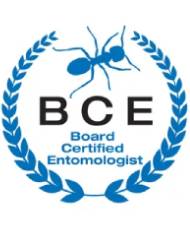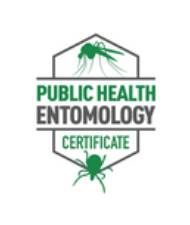RED IMPORTED FIRE ANTS IN MISSOURI
Red imported fire ants in Missouri have recently been discovered in the “Show Me” state. Richard Houseman, Professor of Entomology at the University of Missouri and state extension entomologist confirmed the first report of these unwanted guests. He warns residents of Missouri’s Boothill to be on the lookout for Fire ant mounds on their property.
Originally from Brazil, the red imported fire ant was introduced into the United States through Mobile, Alabama, around 1940. The population of these ants increased rapidly throughout the southeastern U.S. during the 1940s and ’50s. Currently, this ant can be found in 13 states (from southern North Carolina and Florida, then west to sections of California). Red imported fire ants continue to spread north and west. Many of these infestations can be attributed to nursery stock and turf movement. Imported bales of hay originating from southern states can also be responsible for transporting these fire ants from state to state.
Characteristics of Fire Ants in Missouri
The red imported fire ant is small. Workers measure a slight 1/8 to 1/ 4 inch long. These dark reddish brown ants closely resemble many typical house and field ants. They have a distinctive stinger at the tip of their abdomens. Red imported fire ants are not to be confused with the Southern fire ant (Solenopsis xyloni).
Mounds being built by fire ants in Missouri
Red imported fire ants in Missouri build nests in the soil near structural foundations or in landscaping. As worker ants extend their nest, the excavated soil is pushed to the surface, and a tell-tale mound grows. These ant mounds may remain primarily inconspicuous for the first year or more, especially in sandy areas. The mounds can reach up to 12 inches high and 12 or more inches across in areas with considerable clay content. The mounds in sandy soils tend to be flatter and wider.
Mounds made by the red imported fire ants in Missouri can have vegetation and grass growing through them. Each mound houses numerous foraging tunnels that extend in all directions away from the mound just under the soil’s surface. These have openings to the surface at irregular intervals and can extend outward for 200-300 feet. Although the red imported fire ant will nest in almost any type of soil, mounds are not typically found in heavily wooded environments. They prefer expansive, sunny areas, including lawns, meadows, parks, pastures, and cultivated fields.
Fire ants in Missouri colonies are formed by one (or more) winged, mated females (queens) following a mating flight. Once mating occurs, the queens find suitable nesting sites, shed their wings, and begin digging underground chambers to lay their eggs. Queens care for these first eggs and larvae. Once hatched, the ants become workers after 3 to 4 weeks. From then on, the workers care for the queen and brood while foraging for food and expanding their nest. After only one year, an undisturbed colony can contain 10,000 or more workers. A mature colony (3 years old) can have between 100,000 and 500,000 workers and several hundred-winged ants.
Fire Ant Sting
The biggest problem with these pesky red imported fire ants is their sting. The workers can repeatedly sting and attack anything disturbing their mound or food source. Red imported fire ant stings, burn, and itch. A pustule then develops that may take a week or more to heal. Scratching these pustules can potentially lead to secondary bacterial infections and might leave permanent scars. Some people are hypersensitive to fire ant venom and can experience chest pains, nausea, or lapse into a coma after just one sting. Fire ant stings can harm and even kill birds and small animals. The red imported fire ant will also sting poultry and domestic animals.
DIY Treatments Don’t Work
Trying to eliminate fire ants may sound simple. After all, how hard can it be? In reality, fire ants have several characteristics that make them highly formidable against any DIY home treatment plan. For instance, they take over a yard and spread so quickly that geographic coverage can be an obstacle. In other words, they’re everywhere. It is possible to treat a mound and still miss most fire ants in your yard. Each colony includes thousands of reproductive females who can multiply and regenerate exponentially. These insects will amaze you with their ability to resist most treatments. If a group of fire ants senses that they are being threatened, the entire colony can leave, move to another area of your yard, and start again.
ZipZap Termite & Pest Control Provides Fire Ant Treatment in Missouri
At ZipZap Termite & Pest Control, we offer fire ant treatments that are highly effective. Our treatment method includes a pesticide application and removal of the conditions that attracted the fire ants in the first place. Our skilled pest control technicians know exactly what to look for and ensure coverage for your entire yard. In this way, we get rid of the fire ants that are already present and keep them from coming back. Call us today and let ZipZap Termite & Pest Control protect your Kansas City area yard from being taken over by red imported fire ants.



